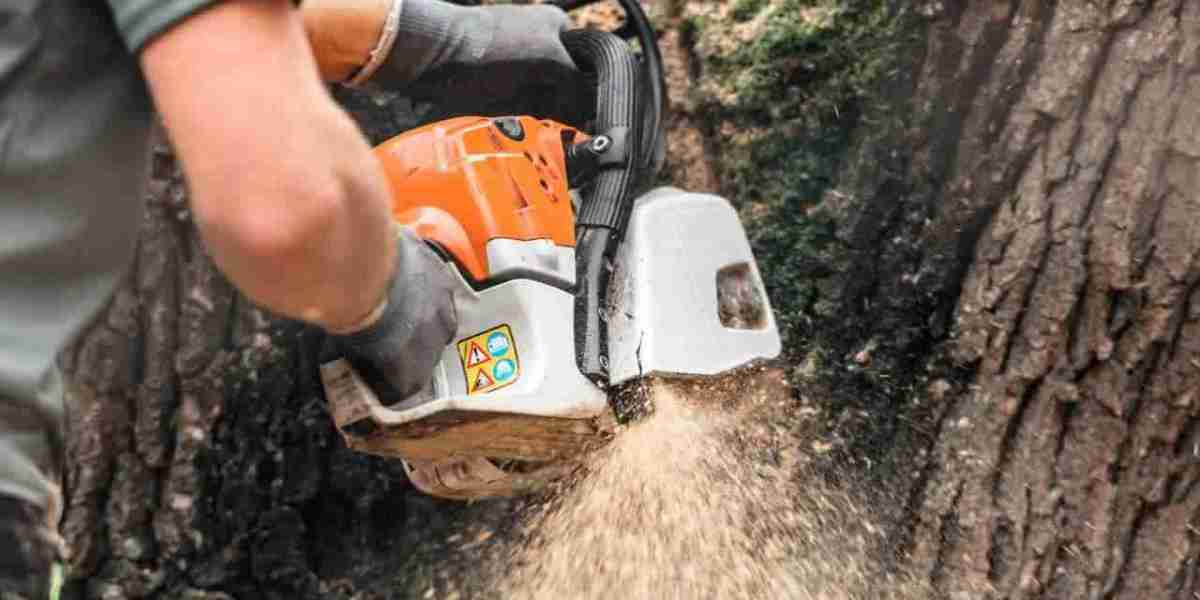Ever noticed how some trees look picture-perfect, while others seem wild and unruly? The difference often comes down to one simple yet powerful practice: tree pruning. Whether you have a tiny backyard or a sprawling property, regular pruning is essential to maintain the health, safety, and beauty of your trees.
In this guide, we’re digging deep into everything you need to know about tree pruning—from the benefits and timing to techniques and pro tips. Ready to give your trees the TLC they deserve? Let’s go!
What Is Tree Pruning?
Tree pruning is the process of selectively removing branches to improve a tree's structure, health, and appearance. Unlike trimming (which is more cosmetic), pruning is strategic and often focused on long-term tree vitality.
Why Tree Pruning Matters
You might be wondering, “Is pruning really that important?” Absolutely. Here’s why:
? Promotes healthy growth
? Prevents disease and pest infestations
? Improves sunlight and air circulation
? Reduces the risk of falling branches
? Enhances curb appeal and landscape aesthetics
Pruning is like a haircut for your tree—done right, it helps it grow stronger and more beautiful.
Benefits of Tree Pruning
1. Healthier Trees
Removing dead, diseased, or damaged branches helps prevent decay from spreading and encourages new, healthy growth.
2. Safer Property
Overhanging limbs near your house, driveway, or power lines are potential hazards—especially during storms. Pruning reduces those risks.
3. Better Appearance
A well-pruned tree just looks better. It adds shape, balance, and structure to your landscape.
4. More Sunlight and Airflow
Pruning opens up the canopy, allowing light and air to reach other plants and lower branches. Great for your garden too!
When Is the Best Time to Prune Trees?
The ideal time depends on the tree type, but generally:
Late winter to early spring (before new growth starts) is best for most trees.
Avoid heavy pruning in summer, especially during extreme heat.
Light pruning can be done year-round to remove dead or broken branches.
Pro tip: Never prune in fall—it encourages new growth right before winter, which can harm the tree.
Types of Tree Pruning
There’s more than one way to prune a tree. Each method has a purpose:
1. Crown Cleaning
Removing dead, dying, or diseased branches.
2. Crown Thinning
Selective removal of branches to improve light and airflow.
3. Crown Raising
Lifting the canopy by removing lower branches—great for clearance over sidewalks or driveways.
4. Crown Reduction
Reducing the tree’s overall size while maintaining its natural shape.
5. Structural Pruning
Shaping young trees for strong, healthy growth.
Each type targets specific issues, so it’s important to choose the right method for your tree.
How to Prune a Tree (DIY Basics)
If you're pruning a small tree or a few low-hanging branches, here’s how to do it safely:
Tools You’ll Need:
Hand pruners (for small branches)
Loppers (for branches up to 2” thick)
Pruning saw (for thicker limbs)
Safety gear (gloves, goggles, helmet)
Steps to Prune:
Inspect the tree – Identify what needs to be removed (dead, crossing, or overcrowded branches).
Start with dead or diseased limbs – Cut back to the healthy part.
Remove branches that rub or cross – These can cause wounds or infections.
Make clean cuts – Cut just outside the branch collar (the swollen area at the base).
Step back and assess – Make sure the tree’s shape looks balanced.
If you’re unsure or dealing with large trees, call in the pros.
Common Tree Pruning Mistakes
Avoid these blunders to keep your trees happy:
? Over-pruning – Never remove more than 25% of a tree’s canopy in one season.
? Flush cuts – Cutting too close to the trunk slows healing and invites disease.
? Topping – Chopping off the top of a tree destroys its structure and health.
? Wrong timing – Pruning during active growth or dormancy stress can shock the tree.
Signs Your Tree Needs Pruning
Not sure if it’s time to prune? Look out for these signs:
? Dead or broken limbs
? Branches touching your roof or power lines
? Dense or overcrowded canopy
? Tree looks lopsided or overgrown
? Signs of disease (fungus, discoloration, oozing sap)
Pruning Young vs. Mature Trees
Young Trees
Early pruning (also called training) shapes the tree and builds strong structure. It’s easier and safer.
Mature Trees
Focus on maintenance: removing deadwood and managing size. Big trees should be pruned by certified arborists.
Do You Need a Professional Arborist?
If you’re dealing with:
Tall or mature trees
Trees near structures or power lines
Signs of disease or pests
Multiple trees needing care
…then yes, hire a professional. Certified arborists understand tree biology, use the right tools, and follow proper safety standards.
How Often Should Trees Be Pruned?
Young trees: Every 2–3 years
Mature trees: Every 3–5 years
Fruit trees: Annually, for better production
Keep an eye on your trees each season. A little maintenance goes a long way.
Tree Pruning and Local Laws
Before you prune, check with your local municipality. Some cities:
Require permits for tree pruning or removal
Protect heritage or street trees
Have tree ordinances you must follow
Avoid fines—know the rules!
Conclusion
Pruning your trees isn’t just a chore—it’s a smart investment in the beauty, safety, and health of your property. Whether you’re shaping a young sapling or maintaining a decades-old oak, tree pruning done right pays off big time.
Not sure where to start? Begin small, know your trees, and don’t be afraid to call the pros when needed. Your trees will thank you—and your yard will look amazing.
FAQs
1. Can pruning kill a tree?
Only if it’s done incorrectly. Over-pruning or making bad cuts can severely harm a tree.
2. What’s the difference between trimming and pruning?
Trimming is usually for aesthetics (like hedges), while pruning focuses on health and safety.
3. How much does professional pruning cost?
Anywhere from $150–$800 depending on the size, type, and number of trees.
4. Should I seal pruning cuts?
No, most experts recommend leaving cuts exposed so the tree can heal naturally.
5. Is it safe to prune trees near power lines?
No! Always hire a licensed professional for trees near utilities. It’s dangerous and potentially illegal to DIY.




